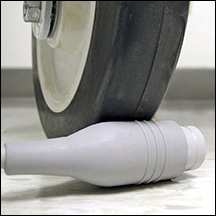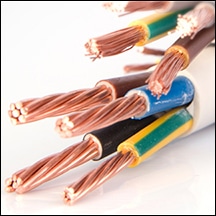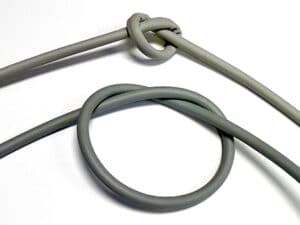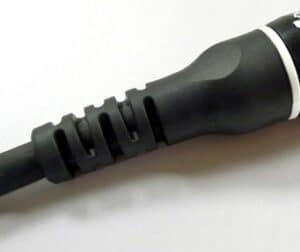EXTENDING THE LIFE OF MEDICAL DEVICES AND CABLES
Wouldn’t it be great if we could all live off donuts, pizza and burgers? It might be wonderful for awhile, but eventually our bodies would pay and our internal and external structures would deteriorate much faster than if we had made a conscious effort to fuel our bodies with a diet that extends our longevity like fruits, vegetables and a healthy dose of Omega3’s. We must consider what we put in our bodies in order to function at our best. At ClearPath Medical, we draw similar parallels when considering the design of medical devices.
All medical devices, including medical cable assemblies, will eventually reach the end of their service life and fail. How long a cable or connector functions before it reaches its end-of-life is primarily determined by design, including the selection of materials, construction, and workmanship. Here are the things to consider when designing a medical device with service life in mind:
1) WHAT IS THE PRODUCT’S DESIRED SERVICE LIFE?
Service-life is the length of time a product functions correctly and as intended. That’s why establishing and documenting the expected service-life is an integral part of designing a medical connector or cable assembly because it will affect all aspects of the design.
2) WHAT ROLE DO COMPONENTS PLAY IN SERVICE LIFE?
The selection of components and raw materials plays a significant role in determining what the service-life of a medical cable assembly or connector will be. If the device is intended for single-use or limited use, less durable and less costly materials might be acceptable. On the other hand, if the product must function correctly for years or in a critical application, more careful evaluation and selection of materials and components are essential to achieve the desired service life.

3) HOW DOES CABLE CONDUCTOR MATERIAL AND STRANDING IMPACT FLEX AND SERVICE LIFE?
Medical cable material is composed of one or more stranded conductors. And, except for the infrequent use of non-metallic carbon filaments, conductors are generally copper-based.

When the cable assembly or lead wire needs to withstand a high number of flex cycles without failing, using conductors that have a high number of fine strands offers greater flexibility and durability than using conductors with fewer, thicker strands. The higher the number of strands, the more flexible the conductor will be, but a finer stranded wire is more costly than wire made with fewer strands.
Besides stranding, the composition of the copper conductor can play a significant role in determining flex life and service life. As a cable or lead wire flexes, the copper conductors heat up and can become “work hardened.” The more times the conductors are bent, the less flexible the conductors become, eventually failing. Copper alloys offer greater flexibility and service-life because these materials resist work hardening, remaining more flexible than pure copper conductors. Copper alloys are more costly than standard copper conductors and are therefore only used where increased flex life and higher reliability is required.
When even greater flex life and service-life is required and where only low voltage signals are transmitted, tinsel conductors wrapped axially around a strength member is a logical design choice. Tinsel conductors offer excellent flex-life characteristics, and a strength member made of a synthetic fiber such as Kevlar supplies tensile strength.
4) WHAT IS THE CABLE JACKET’S ROLE IN SERVICE LIFE?
In November of last year, we talked in great detail about the importance of selecting the right cable jacket (Cable Jacket Material Considerations). When designing a medical cable assembly or lead wire, one of the considerations is the jacket material. The jacket material is not only the part of the cable or wire that is most visible; it plays a significant role in the performance and service life of the finished cable assembly. Because the cable jacket offers mechanical, chemical, and environmental protection to the conductors within the jacket, it can have a significant effect on service life.
The wall thickness of the jacket plays a role in determining the durability and service life of a cable assembly. Comparing the same material with similar hardness, the thicker the jacket, the more durable it will be.

Because the cable or wire jacket is exposed, the conditions that the cable will be used in and how it will be cleaned, disinfected, or sterilized should be addressed early in the design stage.
5) DO RESINS PLAY A PART?
Yes! Virtually all medical cable assemblies and connectors contain injection-molded parts. There is a wide variety of resins available for injection molding and determining the material with the properties most suitable for the end product can be an engineering challenge.
When we think about the durability of various resins here at ClearPath Medical, durability can be defined differently depending on our customer’s intended use. For applications requiring impact strength vs. higher heat deflection vs. the ability to withstand solvents, some materials are more durable and it’s important to know that these various attributes do not always exist in the same polymer.
As an example, ABS is stronger than Styrene when in terms of impact strength, but ABS will not withstand as many autoclave cycles compared to materials like Ultem® (amorphous thermoplastic polyetherimide) or a liquid crystal polymer (LCP). Polymers like Ultem® and LCP have a higher resistance to chemicals and solvents than ABS does. On the other hand, Ultem® and LCP require special processing and are more costly as a result. Styrene is inexpensive and easy to mold but is less shatter resistant. Polypropylene and polyethylene are difficult to shatter but are not very resistant to abrasion or heat.
6) DO WE NEED TO CONSIDER TERMINATIONS IN RELATION TO SERVICE LIFE?
Absolutely. Besides materials, the design of a medical cable assembly or connector plays a significant role in determining service-life. The most common point of failure for cable assemblies is at the point where conductors terminate to the contacts by either soldering or crimping. Designing and manufacturing the assembly so that stress does not transfer to the termination will increase service life.
Preventing stress from being transferred from the cable assembly to a termination is commonly achieved by the use of a strain or bend relief. Most off-the-shelf connectors are available with slip-on boots or molded strain reliefs. While a slip-on boot provides a measure of protection, it is typically less than that of an over-molded strain relief that bonds to the cable and connector.

Depending upon the degree of durability and service-life required, there are design decisions when considering an over-molded strain relief. For a cable, lead wire, or connector that is designed for a single or limited life, a single over-mold using a low-cost material may be a reasonable choice. For longer service life, a two-shot over-mold – inner and outer – may be beneficial.
7) LASTLY, CONSIDER LIFE CYCLE VS. TECHNOLOGY CYCLE
Today, the technology cycle is a significant characteristic of a product’s life cycle. It is becoming more common for a product to become obsolete by technology before it has reached its end of service life. If a cable assembly is expected to become obsolete in five years, it is not necessary to design for longer service life.
SUMMARY
Establishing the expected service life of a medical cable assembly, connector, or other interconnect device should is one of the first steps in the product design process. The specification of materials, coupled with designing-for-service-life and appropriate manufacturing techniques, is likely to produce a device that meets the service-life objective.
Do you have questions about whether or not your medical device and its sub-assemblies have been designing appropriate for its desired service life? Give us a call (714-450-6450 or info@clearpathmedical.com).
Thanks for reading – maybe now you deserve that donut.
Hank Mancini
Hank is a cable assembly ambassador and guest author on ClearPath Medical’s blog. He has more than 20 years of experience in manufacturing with a focus on medical devices leading up to his recent retirement. He's passionate about everything medical cable assembly related, along with the Dodgers, Lakers and taking his brood of grandchildren to Disneyland.

